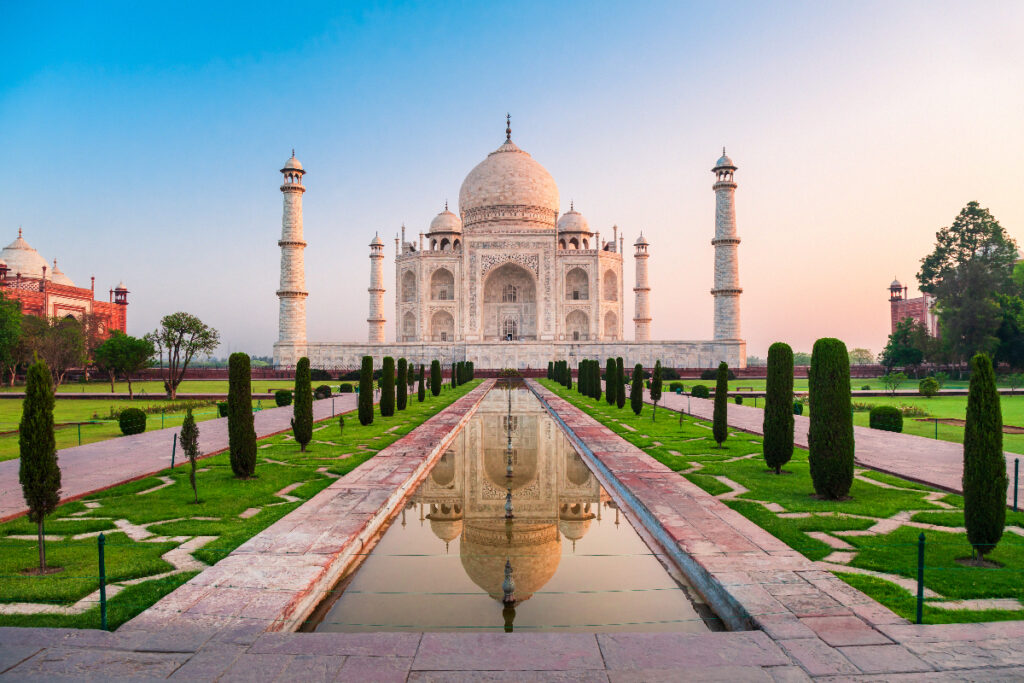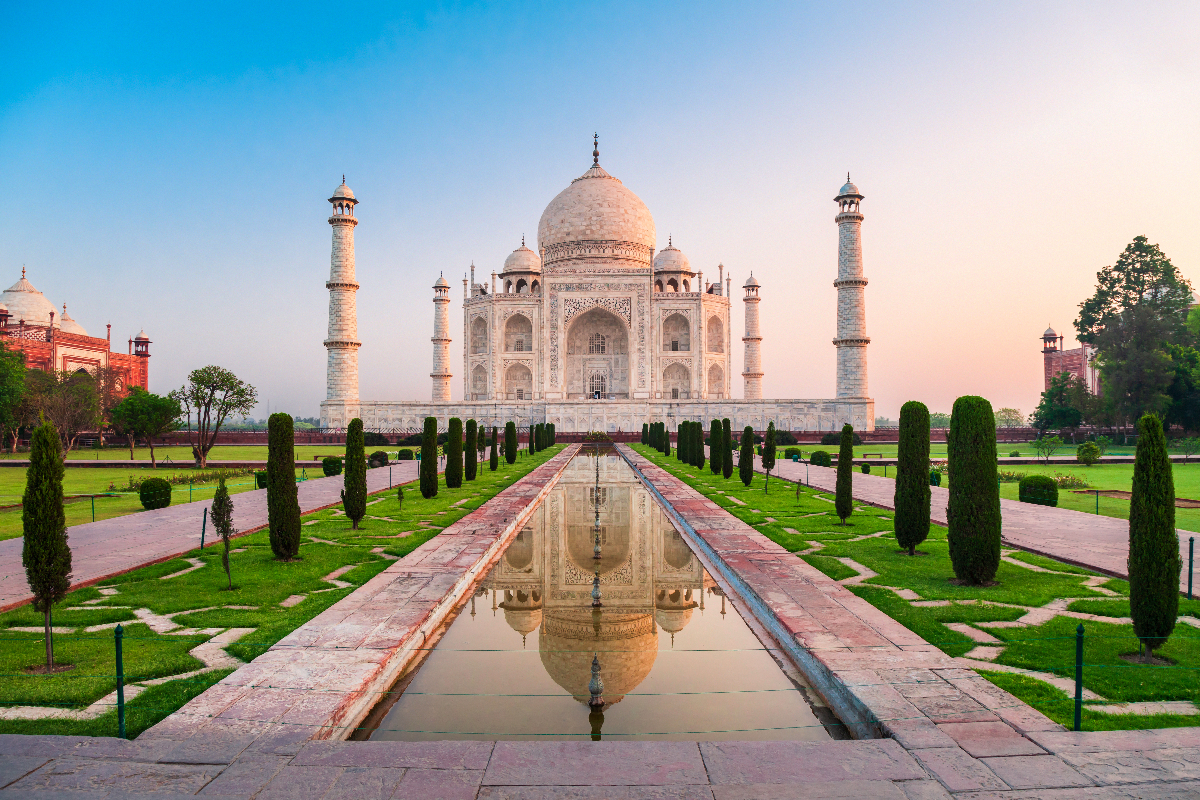17 Breathtaking UNESCO World Heritage Sites To Visit in Your Lifetime
UNESCO World Heritage Sites allow visitors to immerse themselves in history, culture, and natural beauty.
These exceptional sites have captivated and inspired travelers for generations. Each UNESCO World Heritage Site offers a unique and unforgettable experience, from medieval towns, architectural masterpieces, stunning landscapes, and sacred places.

Here are 17 breathtaking UNESCO World Heritage Sites you must visit in your lifetime.
Natural UNESCO World Heritage Sites
1. Belize Barrier Reef Reserve System
Visiting the Belize Barrier Reef Reserve System offers a unique opportunity to explore one of the world’s most remarkable (and 2nd largest) marine ecosystems. Snorkeling or diving in its crystal-clear waters allows you to witness vibrant coral reefs and abundant marine life, including colorful fish, turtles, and rays.
A trip to Belize and this reef is an unforgettable experience that showcases the importance of preserving our oceans.
2. Canadian Rocky Mountain Parks
The Canadian Rocky Mountain Parks, including the world-famous Banff, Jasper, Kootenay, and Yoho National Parks, offer breathtaking landscapes of towering mountains, pristine lakes, and cascading waterfalls.
By visiting these parks, you can hike along scenic trails, spot wildlife such as bears and elk, and marvel at the awe-inspiring beauty of the Canadian Rockies. This natural UNESCO site is an outdoor lovers’ paradise with endless exploration opportunities.
3. West Norwegian Fjords – Geirangerfjord and Nærøyfjord
Exploring the West Norwegian Fjords allows you to witness the dramatic splendor of deep, narrow fjords surrounded by cliffs and lush greenery. Cruising along Geirangerfjord and Nærøyfjord reveals breathtaking vistas, cascading waterfalls, and charming villages tucked away in the fjord’s embrace. It’s truly a once-in-a-lifetime experience.
4. Yellowstone National Park
Spanning three states in the United States, Yellowstone is a site you must see with your own two eyes. The park was designated as a UNESCO World Heritage Site in 1978 and is an unparalleled natural wonder that genuinely showcases the raw power and magnificence of the Earth.
Yellowstone has dramatic geothermal features, including the world-famous Old Faithful geyser and the mesmerizing Grand Prismatic Spring. Yellowstone’s diverse ecosystems harbor abundant wildlife, including grizzly bears, wolves, and herds of bison.
The park was the first national park in the United States, proving the importance of preserving and appreciating these natural gems.
5. Hawaii Volcanoes National Park
Hawaii Volcanoes National Park is a beautiful testament to the ongoing volcanic processes shaping the Hawaiian Islands. Located on the Big Island of Hawaii, this park showcases the incredible power of volcanoes, with Kīlauea and Mauna Loa taking center stage.
Park visitors can witness the dynamic lava flows when the volcanoes are erupting, walk through ancient lava tubes, and marvel at the other dramatic landscapes created by volcanic activity.
Cultural UNESCO World Heritage Sites
6. Cathedral of Notre Dame
The Cathedral of Notre Dame in Paris, France, is a masterpiece of Gothic architecture and an iconic symbol of the city. You’ll appreciate its intricate stained glass windows, towering spires, and remarkable sculptures. It is truly a testament to human artistic and architectural achievement throughout history. While it will be under construction for a few years as a result of a massive fire in 2019, it’s a must-stop on any Paris bucket list vacation!
7. Taj Mahal
A visit to the Taj Mahal in Agra, India, offers a glimpse into one of the world’s most extraordinary monuments of love. This gorgeous marble mausoleum was built in memory of Mughal emperor Shah Jahan’s favorite wife.
The Taj Mahal is renowned for its symmetrical design, intricate carvings, and mesmerizing beauty, especially during sunrise or sunset. Trust me — it’s worth the early alarm clock! Make sure to do your research before visiting to fully appreciate the historical significance and to ensure you respect the culture during your time there.
8. Lübeck’s Old Town
Lübeck’s Old Town, located in Lubeck, Germany, is a charming medieval city with well-preserved architecture and rich history. Walking through its narrow streets and picturesque squares takes you back in time, surrounded by centuries-old buildings, including the iconic Holstentor gate. It’s as though time stands still here.
Combined with nearby natural wonders like Beech Forest (Rugen) and the historic city of Bremen, the region offers a diverse and captivating experience.
9. Historic Centre of Puebla
The Historic Centre of Puebla, located in Mexico, is a UNESCO World Heritage Site renowned for its exceptional architectural and cultural significance. This colonial city boasts stunningly preserved buildings like the Cathedral of Puebla and the colorful Casa de los Muñecos.
There are many things to do in Puebla. Exploring the charming streets allows visitors to immerse themselves in a rich blend of indigenous, European, and Asian influences.
10. Cultural Landscape of Sintra
The Cultural Landscape of Sintra in Portugal is a handsome combination of natural beauty and human creativity. Nestled amidst lush forests and rolling hills, this site is home to magnificent palaces, such as the fairytale-like Pena Palace and the Quinta da Regaleira, with its mystical gardens and underground tunnels.
The landscape — dotted with historic buildings — creates an enchanting atmosphere that has inspired artists, writers, and philosophers throughout the centuries. It’s a place to visit if you want to incite your creative side!
11. Historic Town of Sukhothai and Associated Historic Towns
The Historic Town of Sukhothai and its associated historic towns in Thailand transport visitors back to the golden age of Thai civilization. The ancient capital of Sukhothai showcases intricate temple ruins, exquisite Buddha statues, and peaceful lotus ponds.
Exploring the surrounding towns of Si Satchanalai and Kamphaeng Phet reveals other architectural treasures. It offers insights into the rich history and cultural legacy of the region. There are over 29,000 acres of sacred land to explore, so allow enough time in your journey to explore.
12. La Fortaleza and San Juan National Historic Site in Puerto Rico
La Fortaleza and San Juan National Historic Site in Puerto Rico provide a historical journey into the island’s colonial past. La Fortaleza, the oldest executive mansion in the Americas, was built in the mid-1500s. It stands as a symbol of Spanish colonial architecture and offers stunning views of San Juan Bay.
The historic site also encompasses the impressive Castillo San Felipe del Morro and Castillo San Cristóbal, forts that once protected the city and provide a glimpse into the strategic importance of Puerto Rico in the Caribbean.
13. Historic Centre of Florence
The Historic Centre of Florence, Italy, is a testament to the Renaissance period and the birthplace of artistic and intellectual achievements. The city is adorned with architectural masterpieces, including the iconic Duomo, the Uffizi Gallery, and the Ponte Vecchio.
Strolling through its narrow streets, visiting world-class museums, and admiring awe-inspiring works of art such as Michelangelo’s David offers a profound experience of Florence’s cultural richness and influence.
Mixed UNESCO World Heritage Sites
14. Machu Picchu, Peru
Machu Picchu, nestled in the Andes Mountains, is an ancient Inca city on the bucket list of most adventurers. It captivates visitors with its breathtaking views and intricate stone structures.
Exploring this remarkable archaeological site, along with the nearby city of Cuzco, allows you to immerse yourself in the fascinating history and culture of the Incan civilization.
15. Venice and Its Lagoon
Venice, Italy, is a city unlike any other, known for its intricate canal network, historic buildings, and art treasures.
Exploring the maze-like streets, visiting iconic landmarks such as St. Mark’s Square and the Doge’s Palace, and taking a gondola ride through the enchanting canals provide an unforgettable experience. You’ll surely be captivated by the city’s unique beauty and cultural heritage of this floating World Heritage Site.
16. Portovenere, Cinque Terre, and The Islands
Italy’s region encompassing Portovenere, Cinque Terre, and the Islands (Palmaria, Tino, and Tinetto) offers a stunning combination of coastal beauty, colorful villages, and rugged landscapes.
When visiting, you can explore the picturesque towns of Cinque Terre, hike scenic trails, and enjoy the crystal-clear waters of the Ligurian Sea. This UNESCO site is sure to provide an immersive and memorable experience.
17. Hierapolis-Pamukkale, Turkey
Hierapolis-Pamukkale, Turkey, is a remarkable UNESCO World Heritage Site. It is considered a mixed site due to its exceptional combination of natural and cultural significance.
The site encompasses the ancient city of Hierapolis, renowned for its well-preserved Roman ruins, including impressive theaters, temples, and necropolises.
Additionally, it features the stunning natural phenomenon of Pamukkale, known for its striking white terraces formed by mineral-rich thermal waters cascading down the hillside.
What Is Considered a UNESCO World Heritage Site?
A UNESCO World Heritage Site is a place or area recognized by the United Nations Educational, Scientific and Cultural Organization (UNESCO) as having outstanding universal value to humanity.
These sites can be natural, cultural, or mixed (a combination of natural and cultural) and are selected based on their significance and importance to the world as a whole. Designating World Heritage Sites is to preserve and protect these exceptional places for future generations to enjoy.
On June 30, 2023, UNESCO members voted to permit the United States to rejoin after a four-year absence from the global cultural and educational body.
How Does a Site Become a UNESCO World Heritage Site?
To be considered for UNESCO World Heritage status, a site must meet certain criteria outlined by UNESCO. Once a site is nominated for UNESCO World Heritage status, it undergoes a rigorous evaluation process by international experts.
Only the best of the best make the list. If the site meets the criteria and demonstrates outstanding universal value, it may be inscribed on the World Heritage List, ensuring its protection and preservation for the future.
Every year the World Heritage Convention meets to vote on new sites. There are approximately 20 to 30 new World Heritage Sites designated every year.
As of 2023, there are 1,157 UNESCO World Heritage Sites worldwide. Italy has the most protected sites at 58.
Why You Should Visit a UNESCO World Heritage Site
These sites embody the best of human creativity, cultural diversity, and natural beauty. By immersing yourself in these remarkable destinations, you can connect with history, witness breathtaking landscapes, appreciate architectural wonders, and gain a deeper understanding of different cultures.
Visiting a UNESCO World Heritage Site not only provides enriching experiences but also contributes to the preservation and conservation of these treasures. This ensures their significance and splendor can be enjoyed by generations to come. However, it is crucial to practice responsible tourism when visiting these world gems, as increased tourism presents preservation challenges.
17 Bucket-List-Worthy UNESCO World Heritage Sites
Whether you hope to explore some of the world’s most extraordinary landscapes, step back in time, or fully immerse yourself in a different culture at one of over 1,100 UNESCO sites, the options are truly endless.
As always, explore these sites responsibly and show appreciation for the preservation work the United Nations Educational, Scientific, and Cultural Organization (UNESCO) provides.
This article originally appeared on Wealth of Geeks.

